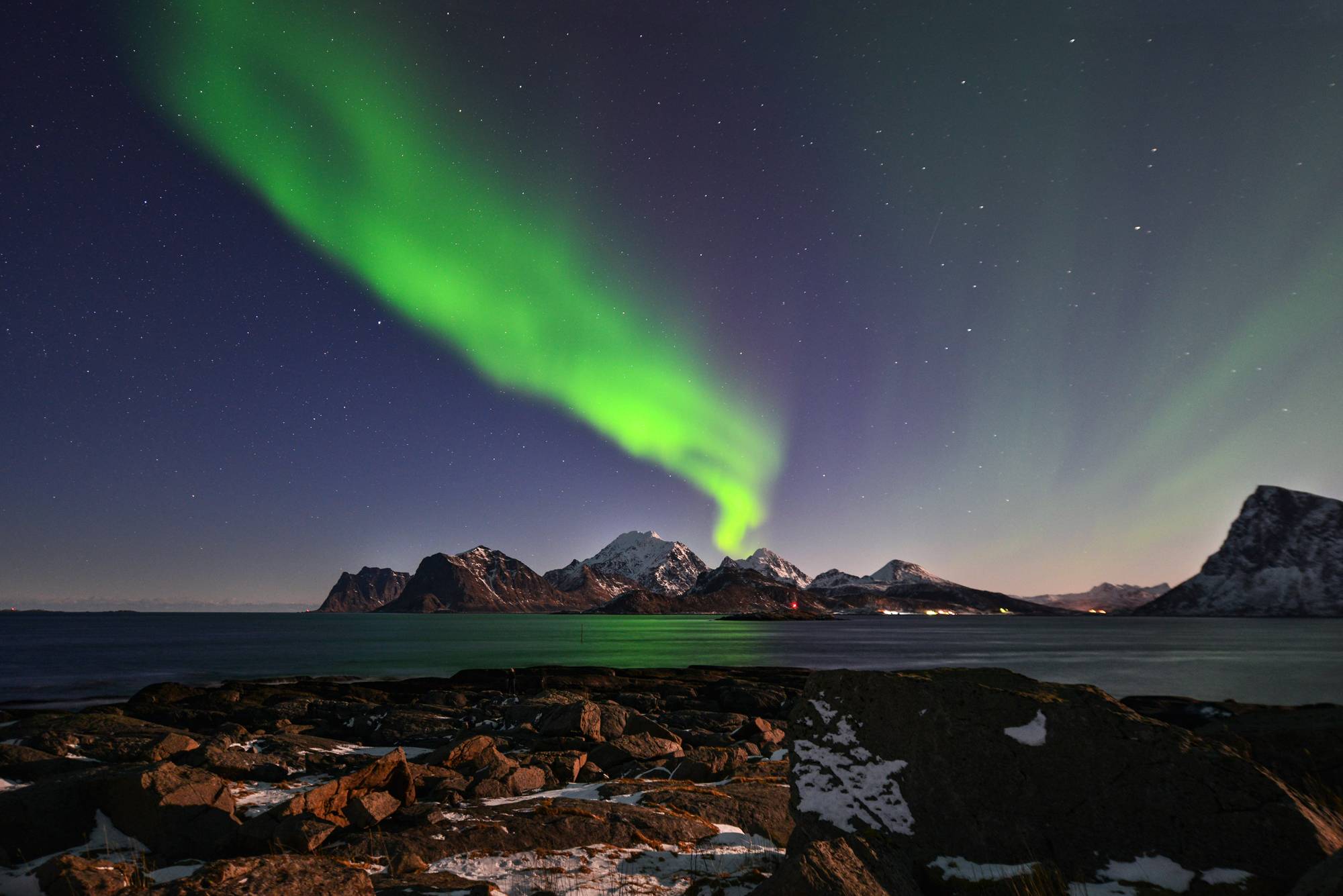Solar Storm to Amp Up Earth's Northern Lights Wednesday and Thursday

A minor solar storm will reach Earth Wednesday (March 14) and could amplify the planet's auroras, making them visible from the northernmost parts of the U.S., space weather officials said.
States in the "northern tier" of the United States, such as Michigan and Maine, could see northern lights from the amped-up auroral display, according to an alert from the Space Weather Prediction Center (SWPC), part of the National Oceanic and Atmospheric Administration (NOAA), in Boulder, Colorado. The storm could also trigger fluctuations in some weak power grids but will have only a minor impact on satellites in space, the center said.
SWPC scientists predicted that this week's geomagnetic storm will be a G1 class, a minor event, and run from Wednesday to Thursday (March 15). [Amazing Auroras: Photos of Earth's Northern Lights]
The solar storm originated from what scientists call a coronal hole, a region on the sun that allows high-speed particles to stream out into space. Those charged particles are expected to reach Earth Wednesday (March 14) and add a little extra oomph to the planet's auroras.
These phenomena occur when Earth's magnetic field funnels charged particles from the sun to the polar regions. When this solar wind interacts with particles in Earth's atmosphere, it causes a stunning glow. Auroras over the North Pole are called the aurora borealis; over the South Pole, they are known as the aurora australis.
During strong solar storms, the solar wind can trigger what scientists call a geomagnetic storm. Depending on its intensity, such a storm can trigger radio blackouts, interfere with power grids on Earth and affect satellites in orbit. As a side effect, they can also amplify the Earth's auroras, making them visible to regions at lower latitudes than is typical.
Email Tariq Malik at tmalik@space.com or follow him @tariqjmalik and Google+. Follow us @Spacedotcom, Facebook and Google+. Original article on Space.com.
Get the Space.com Newsletter
Breaking space news, the latest updates on rocket launches, skywatching events and more!
Join our Space Forums to keep talking space on the latest missions, night sky and more! And if you have a news tip, correction or comment, let us know at: community@space.com.

Tariq is the Editor-in-Chief of Space.com and joined the team in 2001, first as an intern and staff writer, and later as an editor. He covers human spaceflight, exploration and space science, as well as skywatching and entertainment. He became Space.com's Managing Editor in 2009 and Editor-in-Chief in 2019. Before joining Space.com, Tariq was a staff reporter for The Los Angeles Times covering education and city beats in La Habra, Fullerton and Huntington Beach. In October 2022, Tariq received the Harry Kolcum Award for excellence in space reporting from the National Space Club Florida Committee. He is also an Eagle Scout (yes, he has the Space Exploration merit badge) and went to Space Camp four times as a kid and a fifth time as an adult. He has journalism degrees from the University of Southern California and New York University. You can find Tariq at Space.com and as the co-host to the This Week In Space podcast with space historian Rod Pyle on the TWiT network. To see his latest project, you can follow Tariq on Twitter @tariqjmalik.









